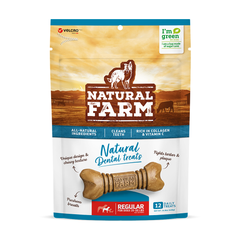Author: Natalie Szymiczek
Navigating bustling public spaces with your furry friend can be a daunting experience. For city dwellers, this is an everyday reality, with the hustle and bustle, unfamiliar faces, and loud sounds that can easily overwhelm your dog. For those of you in quieter, less busy areas, trips to town or social events can still present some challenges.
You might worry about your dog barking at or jumping on strangers, running away, or getting anxious and stressed in the crowd. In this guide, we'll explore practical tips and strategies to ensure your dog's comfort and safety, while acclimating them to busy public places.
Dog Anxiety in Public Places
Just like people, dogs can experience anxiety in busy public places. So many triggers and environmental factors are out of our control. Understanding these triggers and recognizing signs of stress early on can help you manage and alleviate your dog's anxiety.
Common Triggers of Anxiety in Dogs
- Loud Noises: Sudden or persistent loud sounds, such as traffic, fireworks, thunder, construction, or loud music, can be startling.
- Crowded Spaces: Being surrounded by many people or other animals can be overwhelming, especially if your dog isn't used to such environments.
- Unfamiliar Environments: New places with strange smells, sights, and sounds can make dogs feel uneasy and unsure of their surroundings.
- Unpredictable Situations: Encountering unexpected events, such as someone approaching quickly or other dogs behaving aggressively, can trigger stress.
Signs of Stress and Anxiety in Dogs
- Barking: Excessive or frantic barking can be a sign that your dog is feeling threatened or anxious.
- Panting: Heavy panting, especially when not hot or after exercise, can indicate stress.
- Trembling: Shaking or trembling is a clear physical sign of fear or anxiety.
- Trying to Escape: Attempts to run away or hide, pulling on the leash, or looking for a way out are signs your dog is overwhelmed.
- Whining: Vocalizing through whining or whimpering often indicates discomfort or anxiety.
- Body Language: Ears pinned back, tail tucked between the legs, and a lowered body stance are signs of distress.
With a bit of extra preparation, you can help your dog acclimate to the triggers they will encounter in busy places. This will reduce stress and anxiety, both for you and your dog!
Preparation Before Going Out
Let’s start with what you can do before you head out the door.
Basic Commands
Before heading out, make sure your dog is well-versed in basic commands like sit, stay, come, and heel. Practice these commands in different environments to build their confidence and responsiveness. Once your dog has mastered them at home, slowly introduce them in busier settings with more distractions. If your dog hasn’t mastered these commands yet, make sure to bring along some extra reinforcements, like small treats.
Essential Gear
Equip your dog with the appropriate leashes, harnesses, and collars to maintain control and ensure safety. If your dog tends to pull on the leash or slip out of their collar, consider using a more secure harness when venturing into busy areas. Always check that their identification tags are attached to their collar, and consider microchipping them in case they get lost. Only let your dog off-leash in designated, gated dog parks or other approved areas.
Training and Socialization
Early socialization and training are really important for a well-adjusted dog. Gradually expose your dog to different environments and stimuli to build their confidence. Start with quieter areas and slowly introduce busier settings, rewarding calm behavior and reinforcing positive experiences.
Strategies for Keeping Your Dog Calm
Begin your outings with a bathroom break, and possibly a short walk, to help your dog feel relaxed. Stay alert and keep a secure grip on the leash at all times. Use positive reinforcement to reward calm behavior, and keep a safe distance from overwhelming stimuli. Provide breaks and a quiet space if needed to ensure your dog remains comfortable throughout the outing.
Here are some other tools to consider as you venture out with your dog:
Distraction Techniques
Distraction can be a great tool to manage your dog’s behavior in public places. Bring along treats or toys engage your dog and offer distractions when needed. For example, using puzzle toys or interactive games can keep your dog's focus away from potential stressors. Practicing obedience commands like "sit" or "stay" with rewards can redirect their attention and help maintain their calm demeanor.
Calming Aids
Utilize calming sprays, vests, or supplements to help your dog stay relaxed in busy environments. Calming sprays often contain natural ingredients like essential oils (e.g., lavender, chamomile) or synthetic pheromones that mimic the calming scents dogs release when they feel safe and secure. Calming vests, such as the ThunderShirt, apply gentle, constant pressure to a dog's torso. This pressure works similarly to swaddling a baby and can have a calming effect.
Dealing with Unexpected Situations
Encounters with other dogs and strangers can sometimes catch us off guard. Here’s how to handle these situations effectively:
- Handling Encounters: Remain calm and maintain a safe distance if needed. Use commands like "sit" or "stay" to redirect your dog’s focus. Always ask permission before allowing interactions with unfamiliar dogs or people.
- Managing Anxiety or Agitation: If your dog becomes overly anxious or agitated, stay calm to reassure them. Use calming techniques such as gentle strokes or offering a favorite toy. Redirect their attention with treats or engage in a familiar command to regain focus.
- Knowing When to Remove Your Dog: Watch for signs of stress like pacing, panting excessively, or trying to hide. If your dog shows signs of distress despite attempts to calm them, calmly remove them from the situation to a quieter, less stimulating environment.
Best Dog Treats to Bring to Public Places
Always make sure to have some treats to distract your dog when you’re heading out into public places. You may want to pack a baggie of dry dog food to stick in your bag. If you are looking to add some more variety and excitement, check out Natsticks, which can be broken into any size, or Dental Treats, offering dual benefits!


View Natural Farm’s online store for our full range of all-natural and delicious dog treats, chews, and bones.
